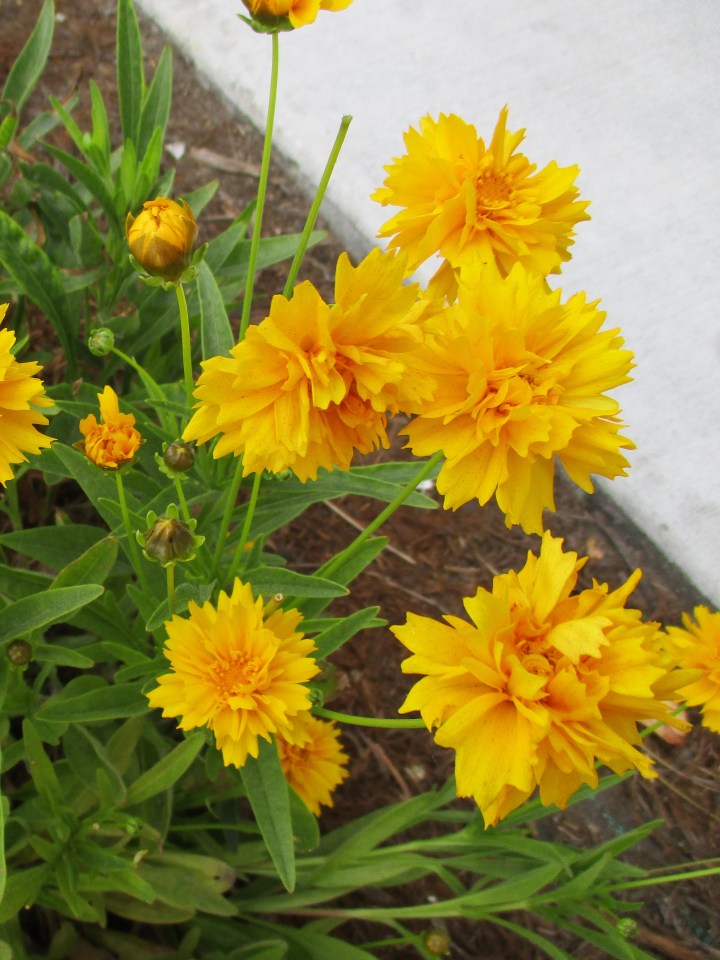 It is a common theme. Coreopsis was a much simpler group of only a few specie and cultivars in the 1980s. There are now too many hybrids and cultivars to keep track of. They have been bred so extensively that they do not produce viable seed like the old fashioned types that can self sow so nicely, and were more closely related to the unimproved specie that would be found in the wild.
It is a common theme. Coreopsis was a much simpler group of only a few specie and cultivars in the 1980s. There are now too many hybrids and cultivars to keep track of. They have been bred so extensively that they do not produce viable seed like the old fashioned types that can self sow so nicely, and were more closely related to the unimproved specie that would be found in the wild.
Breeding did more than expand the range of floral color and form. It combined the more impressive flowers with the resiliency of the toughest of perennial specie. Because they are sterile, some of the modern hybrids may not need to be deadheaded like more traditional types. Although tougher modern hybrids can capitalize on the sustainability fad, they can not proliferate and naturalize.
Coreopsis blooms in summer and autumn. The small daisy like flowers can bloom yellow, orange, red or pink, but traditional bright yellow is still the favorite color. Most cultivars are less than two feet tall and wide. A few can get nearly twice as tall. The most compact cultivars are only about half a foot tall. Coreopsis wants good sun exposure, and will bloom less and likely mildew if shaded.
I’m not a huge fan of the new cultivars – really like the single, bright yellow-orange blooms that spread so easily around the garden. Does ‘sterile’ mean useless to pollinators? If so, why bother?
LikeLiked by 1 person
I think that ‘sterile’ means that it was bred way too much, and is not merely an aberration of nature.
LikeLike
https://xerces.org/2017/11/21/picking-plants-for-pollinators-the-cultivar-conundrum/
Someone else sent this article that you might find interesting.
LikeLiked by 1 person
That is a really great article! And it answers my question – double Coreopsis are not useful to pollinators.
LikeLiked by 1 person
I have this one Tony and today I spent time splitting the clumps and spreading them around. I never knew they came in other colours
LikeLiked by 1 person
The other colors are not very common, at least here. I think that those who appreciate coreopsis expect them to be yellow.
LikeLiked by 1 person
I like the cheery yellow
LikeLiked by 1 person
I think that is why it continues to be the most popular.
LikeLiked by 1 person
One of our native species sometimes is given the common name “golden wave.” In spring, it overspreads Galveston Island (including a group of historic cemeteries) and other barrier islands. It’s simply glorious.
You might be interested in this article about the effects of plant breeding on pollination and such.
LikeLiked by 1 person
Thank you. That is particularly interesting article because someone had just asked about it. I will forward it.
LikeLiked by 1 person
So cheerful….just planted some in the garden, great impact for a few plants…
LikeLiked by 1 person
The older types are so traditional too. I prefer the single flowered types to the fluffy double types in the picture.
LikeLike